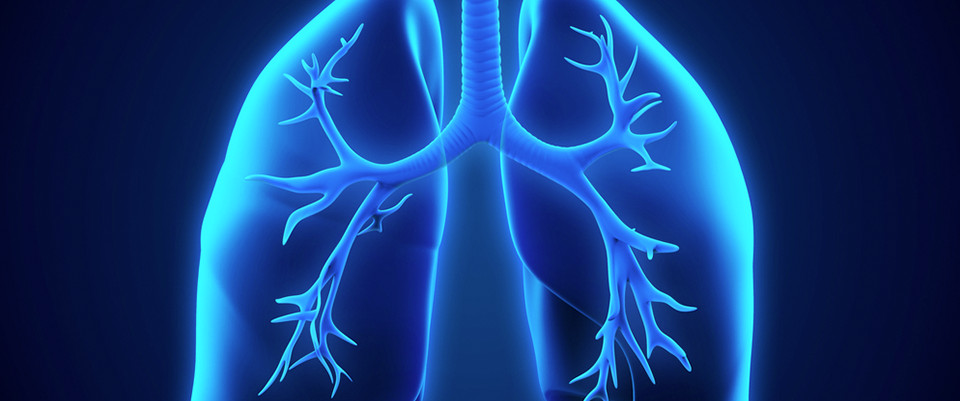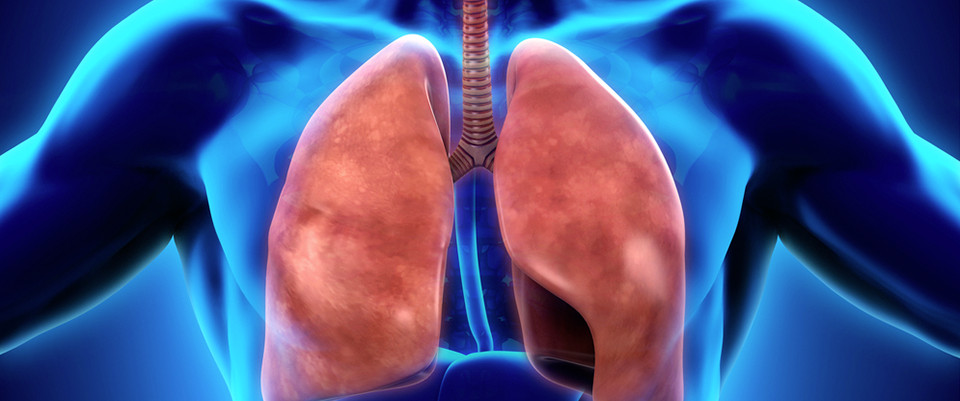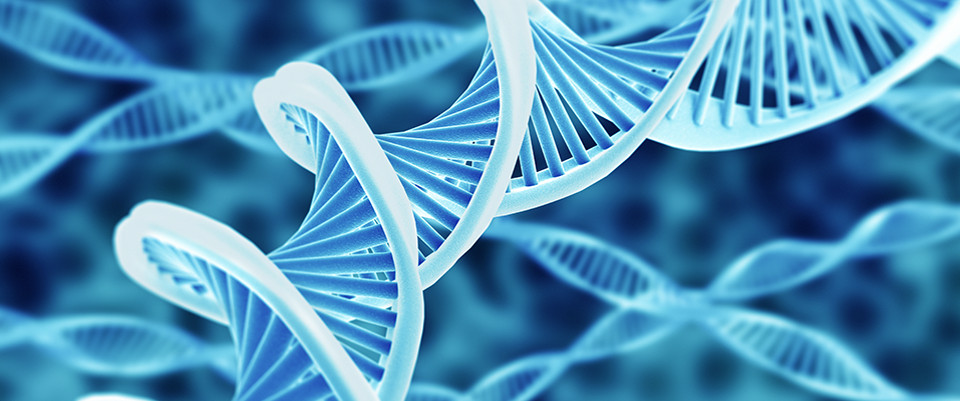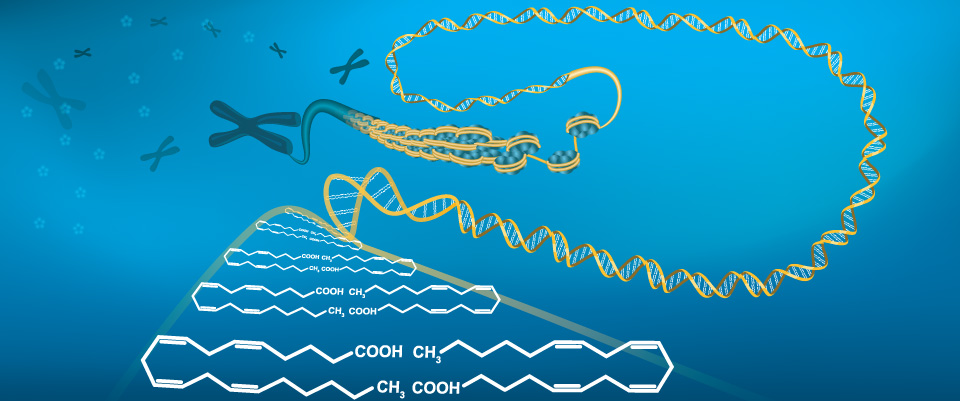PubMed
Metabolic profile of Phellodendron amurense Rupr. in vivo of rat and its metabolomic study on intervention in rheumatoid arthritis
J Pharm Biomed Anal. 2024 Feb 27;243:116064. doi: 10.1016/j.jpba.2024.116064. Online ahead of print.ABSTRACTTo analyze the metabolites (blood, urine and feces) in normal rats after intragastric administration of the decoction of Phellodendri Amurensis Cortex (PAC) and to map the metabolic profile of PAC in vivo of rat; meanwhile, to evaluate the anti-rheumatoid arthritis (RA) effect of PAC by blood metabolomics technique and to explore its mechanism. Performing on UPLC-Q-TOF-MS technology with a Waters ACQUITY UPLC BEH-C18 column (100 mm × 2.1 mm, 1.7 μm), the mobile phase was acetonitrile-0.1% formic acid aqueous solution (gradient elution). Prior to and following the administration of the decoction of PAC, the samples of blood, urine, and fecal were collected from the rats, in the positive ion mode, pharmacogenic metabolites in each biological sample were identified according to the accurate mass, fragment ions, retention time, metabolic reaction type, comparison of reference substance and retrieval of Pub Med database; The adjuvant-type arthritis (AA) rat model was established, and blood metabonomics method was used to study the improvement effect of rheumatoid arthritis after drug intervention with PAC, and its mechanism was preliminarily explored through analysis of metabolic pathway. A total of 72 exogenous components were identified, including 17 prototype components and 55 metabolites; 14 biomarkers were screened by blood metabolomics techniques combined with multivariate statistical analysis, and PAC significantly improved symptoms of rheumatoid arthritis in rats, and the metabolic pathway analysis mainly involves 5 metabolic pathways. The components in the aqueous decoction of PAC mainly undergo phase I metabolic reactions in rats, such as oxidation, reduction, dehydrogenation, demethylation, and phase II metabolic reactions, such as acetylation, glucuronidation, methylation; PAC has anti-rheumatoid arthritis effects, and its mechanism of action may be related to biosynthesis of aminoacyl-tRNA, metabolism of phenylalanine, metabolism of tryptophan, degradation of valine, leucine and isoleucine and biosynthesis of pantothenic acid and coenzyme A, providing a scientific basis for the study of the pharmacodynamic substances and the action mechanism of PAC against RA.PMID:38492509 | DOI:10.1016/j.jpba.2024.116064
Multiomic study of the protective mechanism of Persicaria capitata (Buch.-Ham. ex D.Don) H.Gross against streptozotocin-induced diabetic nephropathy in Guizhou miniature pigs
Phytomedicine. 2024 Mar 3;128:155499. doi: 10.1016/j.phymed.2024.155499. Online ahead of print.ABSTRACTBACKGROUND: Persicaria capitata (Buch.-Ham. ex D.Don) H.Gross (P. capitata, PCB), a traditional drug of the Miao people in China, is potential traditional drug used for the treatment of diabetic nephropathy (DN).PURPOSE: The purpose of this study is to investigate the function of P. capitata and clarify its protective mechanism against DN.METHODS: We induced DN in the Guizhou miniature pig with injections of streptozotocin, and P. capitata was added to the pigs' diet to treat DN. In week 16, all the animals were slaughtered, samples were collected, and the relative DN indices were measured. 16S rRNA sequencing, metagenomics, metabolomics, RNA sequencing, and proteomics were used to explore the protective mechanism of P. capitata against DN.RESULTS: Dietary supplementation with P. capitata significantly reduced the extent of the disease, not only in term of the relative disease indices but also in hematoxylin-eosin-stained tissues. A multiomic analysis showed that two microbes (Clostridium baratii and Escherichia coli), five metabolites (oleic acid, linoleic acid, 4-phenylbutyric acid, 18-β-glycyrrhetinic acid, and ergosterol peroxide), four proteins (ENTPD5, EPHX1, ARVCF and TREH), four important mRNAs (encoding ENTPD5, EPHX1, ARVCF, and TREH), six lncRNAs (TCONS_00024194, TCONS_00085825, TCONS_00006937, TCONS_00070981, TCONS_00074099, and TCONS_00097913), and two circRNAs (novel_circ_0001514 and novel_circ_0017507) are all involved in the protective mechanism of P. capitata against DN.CONCLUSIONS: Our results provide multidimensional theoretical support for the study and application of P. capitata.PMID:38492367 | DOI:10.1016/j.phymed.2024.155499
The distinct hepatic metabolic profiles and the relations with impaired liver function in congenital isolated growth hormone deficient rats
Endocr Connect. 2024 Mar 1:EC-23-0462. doi: 10.1530/EC-23-0462. Online ahead of print.ABSTRACTOBJECTIVE: Patients with growth hormone deficiency (GHD) with inadequate growth hormone levels are often correlated with nonalcoholic fatty liver disease (NAFLD). However, potential mechanism of how GHD influences liver function remains obscure. Thus, we aimed to perform hepatic metabolomics in Lewis dwarf rats, a classical model of isolated GH-deficient rat, to evaluate characterizations of hepatic metabolic profiles and explore their relations with liver functions.METHODS: Lewis dwarf homozygous (dw/dw) rats at 37 weeks (five females and five males), and Lewis dwarf heterozygous (dw/+) rats at 37 weeks (five females and five males) were analyzed in our study. The body lengths and weights, liver weights, serum ALT, and AST levels were measured. The non-targeted hepatic metabolomics was performed between dw/+ and dw/dw rats.RESULTS: Body weights and lengths, liver weights, and serum IGF-1 levels in dw/dw rats were significantly decreased when compared with dw/+ rats. Dw/dw rats exhibited more obvious hepatic steatosis accompanied by higher serum ALT and AST levels. Hepatic metabolomics showed that a total of 88 and 51 metabolites were identified in positive and negative modes, respectively. Seven metabolites (LPC 16:2, LPC 18:3, LPC 22:6, FAHFA18:1, palmitoyl acid, dehydrocholic acid and 7-Ketolithocholic acid) were significantly altered. These seven differential metabolites were significantly associated with abnormal phenotypes. KEGG pathway analysis showed that arginine and proline metabolism and bile secretion pathways were mainly clustered.CONCLUSION: Lewis dw/dw rats with isolated growth hormone deficiency (IGHD) showed liver steatosis and abnormal liver function, which could be potentially associated with distinctive hepatic metabolic profiles.PMID:38492309 | DOI:10.1530/EC-23-0462
Unravelling Post-harvest Ripening Metabolomics of a New White Variety Guava Fruit (Cv Arka Mridula) with Special Emphasis on Phenolics and Corresponding Antioxidants
Appl Biochem Biotechnol. 2024 Mar 16. doi: 10.1007/s12010-024-04907-5. Online ahead of print.ABSTRACTThe phenolic, antioxidant and metabolic profiling of a new white variety guava fruit Arka Mridula (AM) was performed during its storage at the room temperature (28 ± 2 °C). The comparative profiles were generated at three ripening stages (pre-ripe, ripe and over-ripe) of the fruit. Generally, a steady decrease of the phenolic and antioxidant content from the pre-ripe to the ripe stage and a subsequent increase from the ripe to over-ripe stage was observed. Further, a powerful correlation between the phenolic content and antioxidant principles was noted through the principal component analysis. We could identify 53 compounds for the hydro-methanolic fruit extract through LC and GC-MS aided metabolic analysis, and the identified compounds were dominated by phenolics (~ 44%). The statistical analysis revealed that phytochemicals catechin, myricitrin, myricetin, kaempferol glycosides and n-hexadecanoic acid contributed significantly towards the ripening process of AM, during the storage. The present study is expected to provide important insight into the ripening biochemistry of AM. Subsequently, it may help in the future development of metabolically stable guava cultivars with extended post-harvest shelf life.PMID:38492149 | DOI:10.1007/s12010-024-04907-5
Differential drought tolerance among dichondra (Dichondra repens) genotypes in relation to alterations in chlorophyll metabolism, osmotic adjustment, and accumulation of organic metabolites
Protoplasma. 2024 Mar 16. doi: 10.1007/s00709-024-01943-0. Online ahead of print.ABSTRACTDichondra (Dichondra repens) is an important ground cover plant for landscaping and establishment of green space, but adaptive mechanism of drought tolerance is not well understood in this species. This study was conducted to compare differential response to drought stress among three genotypes (Dr5, Duliujiang, and Dr29) based on integrated physiological, ultrastructural, and metabolic assays. Results showed that drought significantly inhibited photosynthesis, accelerated lipids peroxidation, and also disrupted water balance and cellular metabolism in dichondra plants. Dr5 showed better photochemical efficiency of photosystem II and water homeostasis, less oxidative damage, and more stable chlorophyll metabolism than Duliujinag or Dr29 in response to drought stress. In addition, Dr5 accumulated more amino acids, organic acids, and other metabolites, which was good for maintaining better antioxidant capacity, osmotic homeostasis, and energy metabolism under drought stress. Drought tolerance of Duliujiang was lower than Dr5, but better than Dr29, which could be positively correlated with accumulations of sucrose, maltitol, aconitic acid, isocitric acid, and shikimic acid due to critical roles of these metabolites in osmotic adjustment and metabolic homeostasis. Current findings provide insights into understanding of underlying mechanism of metabolic regulation in dichondra species. Dr5 could be used as an important drought-tolerant resource for cultivation and water-saving breeding.PMID:38492055 | DOI:10.1007/s00709-024-01943-0
Electron-activated dissociation (EAD) for the complementary annotation of metabolites and lipids through data-dependent acquisition analysis and feature-based molecular networking, applied to the sentinel amphipod Gammarus fossarum
Anal Bioanal Chem. 2024 Mar 16. doi: 10.1007/s00216-024-05232-w. Online ahead of print.ABSTRACTThe past decades have marked the rise of metabolomics and lipidomics as the -omics sciences which reflect the most phenotypes in living systems. Mass spectrometry-based approaches are acknowledged for both quantification and identification of molecular signatures, the latter relying primarily on fragmentation spectra interpretation. However, the high structural diversity of biological small molecules poses a considerable challenge in compound annotation. Feature-based molecular networking (FBMN) combined with database searches currently sets the gold standard for annotation of large datasets. Nevertheless, FBMN is usually based on collision-induced dissociation (CID) data, which may lead to unsatisfying information. The use of alternative fragmentation methods, such as electron-activated dissociation (EAD), is undergoing a re-evaluation for the annotation of small molecules, as it gives access to additional fragmentation routes. In this study, we apply the performances of data-dependent acquisition mass spectrometry (DDA-MS) under CID and EAD fragmentation along with FBMN construction, to perform extensive compound annotation in the crude extracts of the freshwater sentinel organism Gammarus fossarum. We discuss the analytical aspects of the use of the two fragmentation modes, perform a general comparison of the information delivered, and compare the CID and EAD fragmentation pathways for specific classes of compounds, including previously unstudied species. In addition, we discuss the potential use of FBMN constructed with EAD fragmentation spectra to improve lipid annotation, compared to the classic CID-based networks. Our approach has enabled higher confidence annotations and finer structure characterization of 823 features, including both metabolites and lipids detected in G. fossarum extracts.PMID:38492024 | DOI:10.1007/s00216-024-05232-w
Comparative transcriptomic and metabolomics analysis of modified atmosphere responses in Tribolium castaneum (Coleoptera: Tenebrionidae)
J Insect Sci. 2024 Mar 1;24(2):8. doi: 10.1093/jisesa/ieae015.ABSTRACTModified atmosphere is effective in controlling Tribolium castaneum Herbst, but it has adaptations. Comprehending the potential mechanism of resistance to T. castaneum in a modified atmosphere will help advance related management methods. This study conducted a comparative transcriptomic and metabolomic analysis to understand the physiological mechanism of T. castaneum in adapting to CO2 stress. Results showed that there were a large number of differentially expressed genes (DEGs) in T. castaneum treated with different concentrations of CO2. Gene ontology (GO) analysis revealed significant enrichment of DEGs mainly in binding, catalytic activity, cell, membrane, membrane part, protein-containing complex, biological regulation, and cellular and metabolic process. Kyoto Encyclopedia of Genes and Genomes analysis showed that different treatments had different effects on the metabolic pathways of T. castaneum. DEGs induced by 25% CO2 were involved in arginine and proline metabolism, and 50% air + 50% CO2 treatment affected most kinds of metabolic pathways, mainly the signal transduction pathway, including PI3K-Akt signaling pathway, AMPK signaling pathway, neurotrophin signaling pathway, insulin signaling pathway, and thyroid hormone signaling. Ribosome and DNA replication were enriched under high CO2 stress (75% and 95%). The metabolomics revealed that different concentrations of CO2 treatments might inhibit the growth of T. castaneum through acidosis, or they may adapt to anoxic conditions through histamine and N-acetylhistamine. Multiple analyses have shown significant changes in histamine and N-acetylhistamine levels, as well as their associated genes, with increasing CO2 concentration. In conclusion, this study comprehensively revealed the molecular mechanism of T. castaneum responding to CO2 stress and provided the basis for an effectively modified atmosphere in the T. castaneum.PMID:38491952 | DOI:10.1093/jisesa/ieae015
Metabolomics-Based Effects of a Natural Product on Remyelination After Cerebral Ischemia Injury Via GABABR-pCREB-BDNF Pathway
Neurorehabil Neural Repair. 2024 Mar 16:15459683241238733. doi: 10.1177/15459683241238733. Online ahead of print.ABSTRACTBACKGROUND: Yi-Qi-Tong-Luo Granules (YQTLs) is a natural compound of Traditional Chinese Medicine authorized by China Food and Drug Administration (CFDA). These granules are employed in the convalescent stage of cerebral infarction and render notable clinical efficacy. This study aims to uncover the underlying mechanisms of YQTLs on remyelination after cerebral ischemia injury.MATERIALS AND METHODS: We established cerebral ischemia model in rats using microsphere-induced multiple cerebral infarction (MCI). We evaluated the pharmacological effects of YQTLs on MCI rats, through Morri's water maze test, open field test, hematoxylin and eosin staining, and glycine silver immersion. We employed liquid chromatography mass spectrometry metabolomics to identify differential metabolites. Enzyme-linked immunosorbent assay was utilized to measure the release of neurotrophins, while immunofluorescence staining was used to assess oligodendrocyte precursor cells differences and myelin regeneration. We used Western blotting to validate the protein expression of remyelination-associated signaling pathways.RESULTS: YQTLs significantly improves cognitive function following cerebral ischemia injury. Pathological tissue staining revealed that YQTLs administration inhibits neuronal denaturation and neurofibrillary tangles. We identified 141 differential metabolites among the sham, MCI, and YQTLs-treated MCI groups. Among these metabolites, neurotransmitters were identified, and notably, gamma-aminobutyric acid (GABA) showed marked improvement in the YQTLs group. The induction of neurotrophins, such as brain-derived neurotrophic factor (BDNF) and PDGFAA, upregulation of olig2 and MBP expression, and promotion of remyelination were evident in YQTLs-treated MCI groups. Gamma-aminobutyric acid B receptors (GABABR), pERK/extracellular regulated MAP kinase, pAKT/protein kinase B, and pCREB/cAMP response element-binding were upregulated following YQTLs treatment.CONCLUSION: YQTLs enhance the binding of GABA to GABABR, thereby activating the pCREB/BDNF signaling pathway, which in turn increases the expression of downstream myelin-associated proteins and promotes remyelination and cognitive function.PMID:38491852 | DOI:10.1177/15459683241238733
Novel metabolic biomarker for early detection and diagnosis to the patients with gastric cardia adenocarcinoma
Cancer Med. 2024 Mar;13(5):e7015. doi: 10.1002/cam4.7015.ABSTRACTBACKGROUND: Gastric cardia adenocarcinoma (GCA) is classified as Siewert type II adenocarcinoma at the esophagogastric junction in Western countries. The majority of GCA patients do not exhibit early warning symptoms, leading to over 90% of diagnoses at an advanced stage, resulting in a grim prognosis, with less than a 20% 5-year survival rate.METHOD: Metabolic features of 276 GCA and 588 healthy controls were characterized through a widely-targeted metabolomics by UPLC-MS/MS analysis. This study encompasses a joint pathway analysis utilizing identified metabolites, survival analysis in both early and advanced stages, as well as high and negative and low expression of HER2 immunohistochemistry staining. Machine learning techniques and Cox regression models were employed to construct a diagnostic panel.RESULTS: A total of 25 differential metabolites were consistently identified in both discovery and validation sets based on criteria of p < 0.05, (VIP) ≥ 1, and FC ≥ 2 or FC ≤ 0.5. Early-stage GCA patients exhibited a more favorable prognosis compared to those in advanced stages. HER2 overexpression was associated with a more positive outcome compared to the negative and low expression groups. Metabolite panel demonstrated a robust diagnostic performance with AUC of 0.869 in discovery set and 0.900 in validation set.CONCLUSIONS: A total of 25 common and stable differential metabolites may hold promise as liquid non-invasive indicators for GCA diagnosis. HER2 may function as a tumor suppressor gene in GCA, as its overexpression is associated with improved survival. The downregulation of bile acid metabolism in GCA may offer valuable theoretical insights and innovative approaches for precision-targeted treatments in GCA patients.PMID:38491808 | DOI:10.1002/cam4.7015
Cohort profile: China undergraduate cohort for environmental health study
BMC Public Health. 2024 Mar 15;24(1):828. doi: 10.1186/s12889-024-17915-1.ABSTRACTThe China Undergraduate Cohort (CUC) is an ambispective cohort study with its major purpose to better understand the effects of lifetime environmental exposures on health outcomes. We recruited 5322 college students with an average age of 18.3 ± 0.7 years in China from August 23, 2019 to October 28, 2019. Follow-up surveys were conducted annually. The dataset comprises individual demographic data (e.g. age, sex, height, weight, birth date, race, home address, annual family income, contact information), health-related behavior data (smoking status, smoking cessation, passive smoking exposure, drinking habit, physical activity, dietary status), lifestyle data (physical exercise, dietary habit, length of time spent outdoors), disease history (respiratory disease history, cardiovascular disease history, urinary system disease history, etc.), mental health status data (sleep quality, self-reported stress, anxiety and depression symptoms), lung function and blood samples data. Preliminary results from our cohort have found the association between air pollution, summer heat and mercury exposure and lung function among young adults in China.PMID:38491371 | DOI:10.1186/s12889-024-17915-1
Current data processing methods and reporting standards for untargeted analysis of volatile organic compounds using direct mass spectrometry: a systematic review
Metabolomics. 2024 Mar 16;20(2):42. doi: 10.1007/s11306-024-02104-3.ABSTRACTINTRODUCTION: Untargeted direct mass spectrometric analysis of volatile organic compounds has many potential applications across fields such as healthcare and food safety. However, robust data processing protocols must be employed to ensure that research is replicable and practical applications can be realised. User-friendly data processing and statistical tools are becoming increasingly available; however, the use of these tools have neither been analysed, nor are they necessarily suited for every data type.OBJECTIVES: This review aims to analyse data processing and analytic workflows currently in use and examine whether methodological reporting is sufficient to enable replication.METHODS: Studies identified from Web of Science and Scopus databases were systematically examined against the inclusion criteria. The experimental, data processing, and data analysis workflows were reviewed for the relevant studies.RESULTS: From 459 studies identified from the databases, a total of 110 met the inclusion criteria. Very few papers provided enough detail to allow all aspects of the methodology to be replicated accurately, with only three meeting previous guidelines for reporting experimental methods. A wide range of data processing methods were used, with only eight papers (7.3%) employing a largely similar workflow where direct comparability was achievable.CONCLUSIONS: Standardised workflows and reporting systems need to be developed to ensure research in this area is replicable, comparable, and held to a high standard. Thus, allowing the wide-ranging potential applications to be realised.PMID:38491298 | DOI:10.1007/s11306-024-02104-3
Plasma and serum metabolic analysis of healthy adults shows characteristic profiles by subjects' sex and age
Metabolomics. 2024 Mar 16;20(2):43. doi: 10.1007/s11306-024-02108-z.ABSTRACTINTRODUCTION: Pre-analytical factors like sex, age, and blood processing methods introduce variability and bias, compromising data integrity, and thus deserve close attention.OBJECTIVES: This study aimed to explore the influence of participant characteristics (age and sex) and blood processing methods on the metabolic profile.METHOD: A Thermo UPLC-TSQ-Quantiva-QQQ Mass Spectrometer was used to analyze 175 metabolites across 9 classes in 208 paired serum and lithium heparin plasma samples from 51 females and 53 males.RESULTS: Comparing paired serum and plasma samples from the same cohort, out of the 13 metabolites that showed significant changes, 4 compounds related to amino acids and derivatives had lower levels in plasma, and 5 other compounds had higher levels in plasma. Sex-based analysis revealed 12 significantly different metabolites, among which most amino acids and derivatives and nitrogen-containing compounds were higher in males, and other compounds were elevated in females. Interestingly, the volcano plot also confirms the similar patterns of amino acids and derivatives higher in males. The age-based analysis suggested that metabolites may undergo substantial alterations during the 25-35-year age range, indicating a potential metabolic turning point associated with the age group. Moreover, a more distinct difference between the 25-35 and above 35 age groups compared to the below 25 and 25-35 age groups was observed, with the most significant compound decreased in the above 35 age groups.CONCLUSION: These findings may contribute to the development of comprehensive metabolomics analyses with confounding factor-based adjustment and enhance the reliability and interpretability of future large-scale investigations.PMID:38491253 | DOI:10.1007/s11306-024-02108-z
Pharmacokinetics, tissue distribution, bioavailability and excretion of the anti-virulence drug Fluorothiazinon in rats and rabbits
J Antibiot (Tokyo). 2024 Mar 15. doi: 10.1038/s41429-024-00719-1. Online ahead of print.ABSTRACTGrowing antimicrobial resistance has accelerated the development of anti-virulence drugs to suppress bacterial toxicity without affecting cell viability. Fluorothiazinon (FT), an anti-virulence, type three secretion system and flagella motility inhibitor which has shown promise to suppress drug-resistant pathogens having the potential to enhance the efficacy of commonly prescribed antibiotics when used in combination. In this study we characterized the pharmacokinetics, tissue distribution, bioavailability and excretion of FT in rats and rabbits. FT presented a dose-proportional linear increase in the blood of rats. Tissue distribution profiling confirmed that FT distributes to all organs being substantially higher than in the blood of rats. The bioavailability of FT was higher when administered with starch than with water implying FT should be ideally dosed with food. FT was primarily excreted in the feces in rats and rabbits while negligible amounts are recovered from the urine.PMID:38491136 | DOI:10.1038/s41429-024-00719-1
Spatiotemporal formation of glands in plants is modulated by MYB-like transcription factors
Nat Commun. 2024 Mar 15;15(1):2303. doi: 10.1038/s41467-024-46683-0.ABSTRACTAbout one third of vascular plants develop glandular trichomes, which produce defensive compounds that repel herbivores and act as a natural biofactory for important pharmaceuticals such as artemisinin and cannabinoids. However, only a few regulators of glandular structures have been characterized so far. Here we have identified two closely-related MYB-like genes that redundantly inhibit the formation of glandular cells in tomatoes, and they are named as GLAND CELL REPRESSOR (GCR) 1 and 2. The GCR genes highly express in the apical cells of tomato trichomes, with expression gradually diminishing as the cells transition into glands. The spatiotemporal expression of GCR genes is coordinated by a two-step inhibition process mediated by SlTOE1B and GCRs. Furthermore, we demonstrate that the GCR genes act by suppressing Leafless (LFS), a gene that promotes gland formation. Intriguingly, homologous GCR genes from tobacco and petunia also inhibit gland formation, suggesting that the GCR-mediated repression mechanism likely represents a conserved regulatory pathway for glands across different plant species.PMID:38491132 | DOI:10.1038/s41467-024-46683-0
Hydrogel immobilized bacteria@MOFs composite towards Bisphenol A degradation and the interconnection mechanism elucidation
Environ Res. 2024 Mar 13:118718. doi: 10.1016/j.envres.2024.118718. Online ahead of print.ABSTRACTBisphenol A (BPA) degradation efficiency by bacteria or by metal-organic-frameworks (MOFs) catalyzed persulfate (PMS) oxidation have been studied intensively. However, their synergistic effect on BPA degradation was less reported. In this study, we combined previously synthesized CNT-hemin/Mn-MOF with an BPA degrading bacteria SQ-2 to form a composite (SQ-2@MOFs). CNT-hemin/Mn-MOF in the composite catalyzed little PMS to promote the degradation efficiency of SQ-2 on BPA. Results indicated SQ-2@MOFs significantly accelerated BPA degradation rate than SQ-2 alone. Furthermore, SQ-2@MOFs composite was successfully immobilized in hydrogel to achieve better degradation performance. Immobilized SQ-2@MOFs could almost completely degrade 1-20 mg/L BPA within 24 h and completely degrade 5 mg/L BPA at pH 4-8. Besides, degradation byproducts also reduced by immobilized SQ-2@MOFs, which promoted the cleaner biodegradation of BPA. Metabolomics and multiple chemical characterization results revealed the interconnection mechanism between CNT-hemin/Mn-MOFs, SQ-2 and hydrogel. CNT-hemin/Mn-MOF helped SQ-2 degrade BPA into more biodegradable products, promoted electron transfer, and augmented BPA degradation ability of SQ-2 itself. SQ-2 enabled the surface electronegativity of SQ-2@MOFs more suitable for BPA contact. Meanwhile, SQ-2 avoided the loss of Fe and Mn of CNT-hemin/Mn-MOF. Hydrogel augmented the above synergistic effect. This study provided new perspective for the development of biodegradation materials through interdisciplinary integration.PMID:38490623 | DOI:10.1016/j.envres.2024.118718
Evaluation of the Protective Bioactivity and Molecular Mechanism Verification of Lactoferrin in an Alzheimer's Mouse Model with Ulcerative Enteritis
J Dairy Sci. 2024 Mar 13:S0022-0302(24)00563-0. doi: 10.3168/jds.2024-24206. Online ahead of print.ABSTRACTThe development of new drug therapies for Alzheimer's disease (AD) is an important research topic today, but the pathogenesis of AD has not been thoroughly studied, and there are still several shortcomings in existing drug therapies. Therefore, this study aims to explore the molecular mechanism of lactoferrin in the treatments of AD and ulcerative colitis (UC) which are susceptible to AD, starting from the principle of "one drug, two diseases, and the same treatment." This study used pathological staining and specific indicators staining to preliminarily evaluate the interventions of lactoferrin on UC injury and AD progression. And 16s RNA full-length sequencing was used to investigate the effect of lactoferrin on the abundance of intestinal microbiota in AD mice. Then, intestinal tissue and brain tissue metabolomics analysis were used to screen specific metabolic pathways and preliminarily verify the metabolic mechanism of lactoferrin in alleviating 2 diseases by regulating certain specific metabolites. Moreover, lactoferrin significantly changed the types and abundance of gut microbiota in AD mice complicated by UC. To conclude, this study proved the clinical phenomenon of AD susceptibility to UC, and verified the therapeutic effect of lactoferrin on 2 diseases. More importantly, we revealed the possible molecular mechanism of LF, not only does it enrich the cognitive level of lactoferrin in alleviating AD by regulating the gut microbiota through the brain gut axis from the perspective of the theory of "food nutrition promoting human health," but it also provides a practical basis for the subsequent research and development of lactoferrin and drug validation from the perspective of "drug food homology."PMID:38490542 | DOI:10.3168/jds.2024-24206
Bile acid profiles and mRNA abundance of bile acid-related genes in adipose tissue of dairy cows with high versus normal body condition
J Dairy Sci. 2024 Mar 13:S0022-0302(24)00571-X. doi: 10.3168/jds.2024-24346. Online ahead of print.ABSTRACTBesides their lipid-digestive role, bile acids (BA) influence overall energy homeostasis, such as glucose and lipid metabolism. We hypothesized that BA along with their receptors, regulatory enzymes, and transporters are present in subcutaneous adipose tissue (scAT). In addition, we hypothesized that their mRNA abundance varies with the body condition of dairy cows around calving. Therefore, we analyzed BA in serum and scAT as well as the mRNA abundance of BA -related enzymes, transporters, and receptors in scAT during the transition period in cows with different body conditions around calving. In a previously established animal model, 38 German Holstein cows were divided into either a high (HBCS; n = 19) or normal BCS (NBCS; n = 19) group based on their body condition score (BCS) and back fat thickness (BFT). Cows were fed different diets to achieve the targeted differences in BCS and BFT (NBCS: BCS <3.5, BFT <1.2 cm; HBCS: BCS >3.75, BFT >1.4 cm) until dry-off at 7 wk ante partum. During the dry period and subsequent lactation, both groups were fed the same diets regarding their demands. Using a targeted metabolomics approach via LC-ESI-MS /MS, BA were analyzed in serum and scAT at wk -7, 1, 3, and 12 relative to parturition. In serum, 15 BA (cholic acid (CA), chenodeoxycholic acid (CDCA), glycocholic acid (GCA), taurocholic acid (TCA), glycochenodeoxycholic acid (GCDCA), taurochenodeoxycholic acid (TCDCA), deoxycholic acid (DCA), lithocholic acid (LCA), glycodeoxycholic acid (GDCA), glycolithocholic acid (GLCA), taurodeoxycholic acid (TDCA), taurolithocholic acid (TLCA), β-muricholic acid (MCA(b)), tauromuricholic acid (sum of α and β) (TMCA (a+b)), glycoursodeoxycholic acid (GUDCA)) were observed, whereas in scAT 7 BA (CA, GCA, TCA, GCDCA, TCDCA, GDCA, TDCA) were detected. In serum and scAT samples, the primary BA CA and its conjugate GCA were predominantly detected. Increasing serum concentrations of CA, CDCA, TCA, GCA, GCDCA, DCA, and MCA(b) with the onset of lactation might be related to the increasing DMI after parturition. Furthermore, serum concentrations of CA, CDCA, GCA, DCA, GCDCA, TCA, LCA, and GDCA were lower in HBCS cows compared with NBCS cows, concomitant with increased lipolysis in HBCS cows. The correlation between CA in serum and scAT may point to the transport of CA across cell membranes. Overall, the findings of the present study suggest a potential role of BA in lipid metabolism depending on the body condition of periparturient dairy cows.PMID:38490538 | DOI:10.3168/jds.2024-24346
Bio-sorption capacity of cadmium and zinc by Pseudomonas monteilii with heavy-metal resistance isolated from the compost of pig manure
Bioresour Technol. 2024 Mar 13:130589. doi: 10.1016/j.biortech.2024.130589. Online ahead of print.ABSTRACTThe tolerance of Pseudomonas monteilii X1, isolated from pig manure compost, to Cd and Zn, as well as its capacity for biosorption were investigated. The minimum inhibitory concentration (MIC) of Cd and Zn for the strain were 550 mg/L and 800 mg/L, respectively. Untargeted metabolomics analysis revealed that organic acids and derivatives, lipids and lipids-like molecules, and organic heterocyclic compounds were main metabolomics. The glyoxylate and dicarboxylate metabolism pathway were significantly enriched under Cd2+ stress. The isothermal adsorption and adsorption kinetics experiments determined that the strain had adsorption capacities of 9.96 mg/g for Cd2+ and 23.4 mg/g for Zn2+. Active groups, such as hydroxyl, carboxyl and amino groups on the cell surface were found to participate in metal adsorption. The strain was able to convert Zn2+ into Zn3(PO4)2·4H2O crystal. Overall, this study suggested that Pseudomonas monteilii has potential as a remediation material for heavy metals.PMID:38490461 | DOI:10.1016/j.biortech.2024.130589
Redox organization of living systems
Free Radic Biol Med. 2024 Mar 13:S0891-5849(24)00134-5. doi: 10.1016/j.freeradbiomed.2024.03.008. Online ahead of print.ABSTRACTRedox organization governs an underlying simplicity in living systems. Critically, redox reactions enable the essential characteristics of life: extraction of energy from the environment, use of energy to support metabolic and structural organization, use of dynamic redox responses to defend against environmental threats, and use of redox mechanisms to direct differentiation of cells and organ systems essential for reproduction. These processes are sustained through a redox context in which electron donor/acceptor couples are poised at substantially different steady-state redox potentials, some with relatively reducing steady states and others with relatively oxidizing steady states. Redox-sensitive thiols of the redox proteome, as well as low molecular weight redox-active molecules, are maintained individually by the kinetics of oxidation-reduction within this redox system. Recent research has revealed opposing network interactions of the metallome, redox proteome, metabolome and transcriptome, which appear to be an evolved redox response structure to maintain stability of an organism in the presence of variable oxidative environments. Considerable opportunity exists to improve human health through detailed understanding of these redox networks so that targeted interventions can be developed to support new avenues for redox medicine.PMID:38490457 | DOI:10.1016/j.freeradbiomed.2024.03.008
Sporisorium reilianum polysaccharides improve DSS-induced ulcerative colitis by regulating intestinal barrier function and metabolites
Int J Biol Macromol. 2024 Mar 13:130863. doi: 10.1016/j.ijbiomac.2024.130863. Online ahead of print.ABSTRACTThis study investigated the regulatory effects of Sporisorium reilianum polysaccharides (SRPS) on metabolism and the intestinal barrier in mice with colitis induced by dextran sulfate sodium (DSS). SRPS were resistant to the digestion of saliva, gastric juices, and intestinal fluid. SRPS significantly reduced the disease activity index and inhibited DSS-induced colon shortening. The expression of proinflammatory cytokines in the colon was normal (P < 0.05). Acetic acid, propionic acid, butyric acid, isobutyric acid, and isovaleric acid contents increased. Moreover, 64 biomarker metabolites were affected, including 42 abnormal decreases and 22 abnormal increases caused by DSS, which targeted amino acid biosynthesis; tryptophan metabolism; protein digestion and absorption; aminoacyl-tRNA biosynthesis; and glycine, serine, and threonine metabolism. In addition, SRPS reduced goblet cell loss and increased mucin secretion. The short-chain fatty acid receptor GPR41 was activated, and zonula occludens-1 and occludin expression levels were upregulated. Epithelial cell apoptosis was inhibited by increased Bcl-2 and decreased Bax expression NLRP3, ASC, and caspase-1 protein levels decreased. Intestinal barrier damage improved, and colon inflammation was reduced. Thus, our preliminary findings reveal that SRPS regulates metabolism and has the potential to protect the intestinal barrier in ulcerative colitis mice.PMID:38490380 | DOI:10.1016/j.ijbiomac.2024.130863











